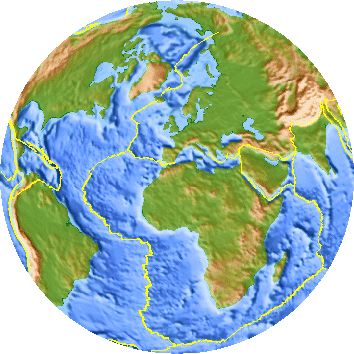 There's only one voice I trust when it comes to Northeast winter weather! Here's a recap of my interview with Paul Kocin.
There's only one voice I trust when it comes to Northeast winter weather! Here's a recap of my interview with Paul Kocin.I recently had the opportunity to go one-on-one with meteorologist and winter weather expert, Paul Kocin. Paul, a Long Island native and resident of The Northeast Quadrant, is unquestionably the authority when it comes to forecasting Nor’easters and analyzing their impact throughout the region.
Paul’s professional experience ranges from NASA’s Spaceflight Center to the National Weather Service, and from The Weather Channel to NOAA, where he now works for their Hydrometeorological Prediction Center, and focuses on Alaska weather.
I became a fan of Paul from about the late 90s through the mid 2000s when he worked for The Weather Channel as an on-air personality. Much like me, Paul was interested in weather from a very early age. Growing up in the Tri-State region he faced many exciting weather events – from notable winter storms where he found his niche, to glancing blows by hurricanes and other fascinating meteorological phenomenon that plagued the area.
In speaking with Paul I was able to feed my passion for reminiscing about major winter weather events. We shared stories of major Nor’easters we both personally faced. From the Blizzard of 78 (the year I was born), to a quiet pattern in the 80s, and from an active 90s featuring two blockbuster record-breaking snowstorms, to the super-sized blizzards of this past winter, Paul and I sounded off back and forth about how these winter weather events affected us.
Paul co-developed the Northeast Snowfall Impact Scale (NESIS), which categorizes significant Northeast United States snowfalls from category 1 (notable) to category 5 (extreme). We spoke briefly about his role in developing the scale, as well as him authoring the two-volume book, “Northeast Snowstorms," available through the American Meteorological Society; and how this year’s snowstorms have him working on a third volume tentatively called "Northeast snowstorms: The 21st Century." But what I was really curious about is how the recent snowstorms of this past winter measured up on the NESIS.
I learned that in all history only two storms ever reached category 5 status – and I was happy to find out that I personally lived through both: the Superstorm of 1993 and the Blizzard of 1996. As far as this past year is concerned, it turns out the highest-ranking snowstorm was the strong category 3 record-breaking blizzard for New York City on February 23 – 28. Behind that was the mid-Atlantic blizzard on February 4 – 7, which also ranked category 3, but fell somewhat weaker in that category. The second blizzard that month, which stretched from Virginia to Massachusetts on February 9 – 11, ranked category 2. The December 18 – 21 blizzard, the first major snowstorm of the season, ranked category 3.
So what is the likelihood that an epic winter season like the one we just experienced is repeated? Well, while the chances are not likely, Paul says, “One should be more optimistic!” Looking back in history the past ten years have featured some of the biggest snowstorms for the northeast, and this past winter featured some of the biggest ever. “No matter how you look at it, we are in a general period of more spectacular winter storms!”
Paul ended, “The storm is always better somewhere else, for someone else. It just so happens that this year that someone else was us, and the somewhere else was in our own backyard!”





























